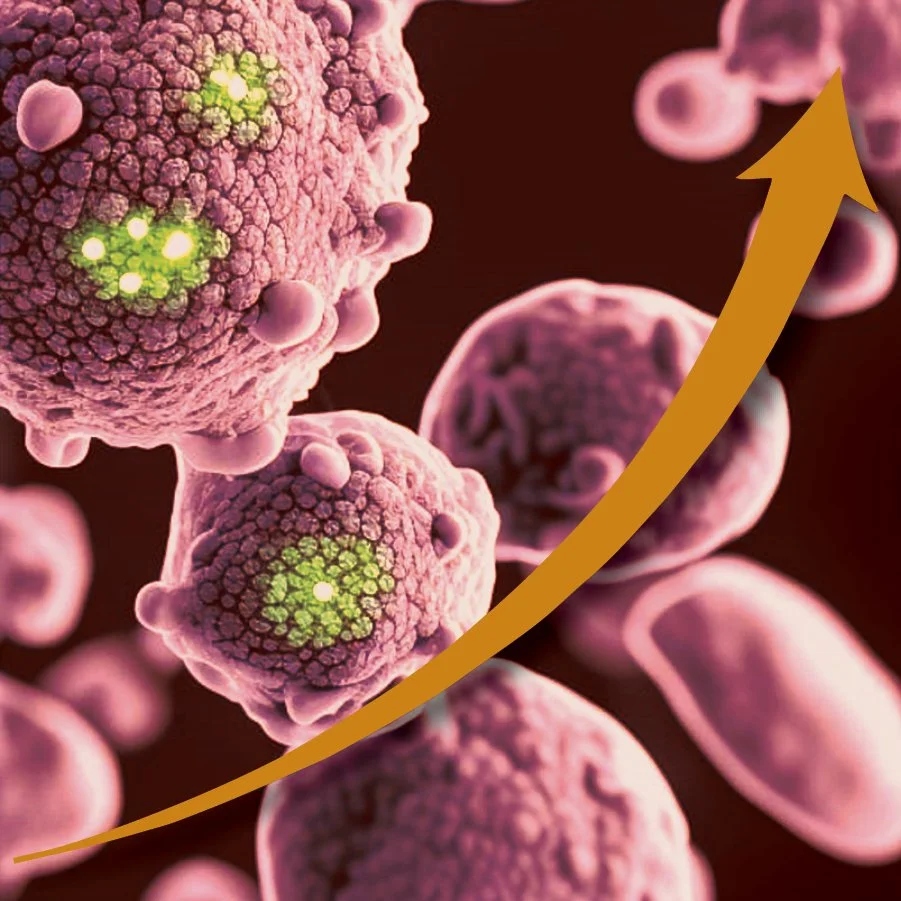What’s driving growth in immuno-oncology?
Immuno-oncology (IO) is one of the fastest-growing segments, widely seen as revolutionizing medical oncology. IO therapeutics utilize the body’s immune responses, both adaptive and innate, to target cancer cells. This is a dynamic segment in which novel therapeutics are developed to address significant unmet needs across a wide range of tumors.
Checkpoint modulators have become standard treatments as mono/combo therapies and will continue to drive growth in the future as the most widely adopted class.
~65 IO drugs have been approved by the FDA, and over 5,000 IO clinical trials are registered across solid and liquid tumors with an increasing focus on checkpoint modulators and cell therapies. Note that ~83% of these trials evaluate PD-1/PDL-1 combination regimens.
There remain significant unmet needs in efficacy and toxicity, despite the advances in IO, as well as improved biomarkers to identify patients who respond to selected therapies.
There are six key therapeutic classes based on different immune system components.
Checkpoint modulators are presently the most widely adopted class of IO therapeutics, particularly as the basis of combination therapies. Additionally, cell therapies have shown greater promise in blood cancers to date than solid tumors.
Checkpoint modulators, such as PD-1 inhibitors like pembrolizumab and nivolumab, modulate immune checkpoint molecules with antibodies/other biologic agents to affect T-cell response against tumor cells.
Bispecific antibodies bring together two different cell/protein types to affect a biological function and have been offering new treatment options for patients.
Cell therapies require the administration of modified immune cells into a patient’s body to exert direct or indirect Tumor activity and include adoptive and cytotoxic cell therapies. They may be either autologous cells from a patient’s body or allogenic cells from a donor.
Cancer vaccines intended to prevent cancer, such as those against HPV to prevent cervical cancer, or treatment vaccines like Provenge for prostate cancer.
Oncolytic viruses are genetically engineered to target tumor cells and can be modified to increase selectivity.
Cytokines are primarily molecules secreted by immune cells. Natural cytokines are the oldest IO drugs, but next-generation cytokines are in clinical development using a targeted approach instead of the older systemic manner.
To date, 65 IO drugs have been approved by the FDA.
Solid tumors are abnormal masses of tissue that grow in organ systems. Liquid tumors are blood cancers (leukemias and lymphomas) affecting the bone marrow, the blood cells, and the lymphatic system. Solid and liquid tumors are commonly treated with different classes of drugs. The targeted antibodies and checkpoint modulators are standard treatments for solid tumors versus targeted therapies, antibody-drug conjugates, and cell therapies for liquid tumors. Of the 65 approved IO treatments, ~60% are for solid tumors, and 40% are for liquid tumors.
Checkpoint modulators and cell therapies are expected to continue to drive the growth in this segment, with checkpoint modulators expected to reach $88B and cell therapies expected to grow to $28B by 2027 across the 8 major markets (US/Canada, EU5, Japan). The growth of the IO market segment has forecasted to be ~20% annually during this period.
The top three drugs are all checkpoint modulators: Keytruda (pembrolizumab) from Merck, Opdivo (nivolumab) from BMS, and Tecentriq (atezolizumab) from Roche. Note that Keytruda had ~$20.9B and Opdivo had $8.3B in sales in 2022, which are expected to grow further. Seven of the top ten drugs are checkpoint modulators, four being PD-1 mAbs, two being PD-L1 mAbs, and the final being a CTLA-4 mAb. Two of those ten are cell therapies (CAR-T lineage); the remaining therapeutic is a bispecific antibody.
The IO pipeline concentrates on cell therapies, cancer vaccines, and checkpoint modulators.
IO drugs are expected to continue to advance oncology treatment paradigms across tumors. There are over 777 products currently in Ph1-3 clinical development, of which ~76% are focused on solid tumors versus ~24% on liquid tumors. Though most of the pipeline is focused on solid tumors, the greatest program concentration is in lymphomas, lung cancers, and leukemias, respectively. Like the current landscape, there is continued interest in investing in cell therapies, cancer vaccines, and checkpoint modulators. In the over 5,000 industry-sponsored clinical trials in IO across the 8MM, ~83% are evaluating PD-1/PDL-1 combination regimens in conjunction with various immunotherapies, targeted therapies, chemotherapies, and radiotherapies.
Source data: Global Data 2022Significant unmet needs remain, but the future of IO therapeutics looks promising.
Current primary medical unmet needs in IO are improving efficacy and toxicity. From an efficacy standpoint, there is a significant opportunity to improve a) overall survival, b) progression-free survival, c) durability of response, d) long-term benefit, e) treatment response rates, and f) overcoming IO resistance. Toxicity needs include reducing toxicity and adverse events of the drugs and managing quality of life. Finally, another major component is the need for improved biomarkers and methods to more clearly identify patients who would respond to the therapy and guide personalized treatment decisions. Biopharma companies must target these unmet needs to develop differentiated and personalized IO treatments while ensuring optimal patient access.
Authors: Subbarao Jayanthi, LizAnn Sung
We welcome your thoughts and perspectives on key developments in IO segment.


